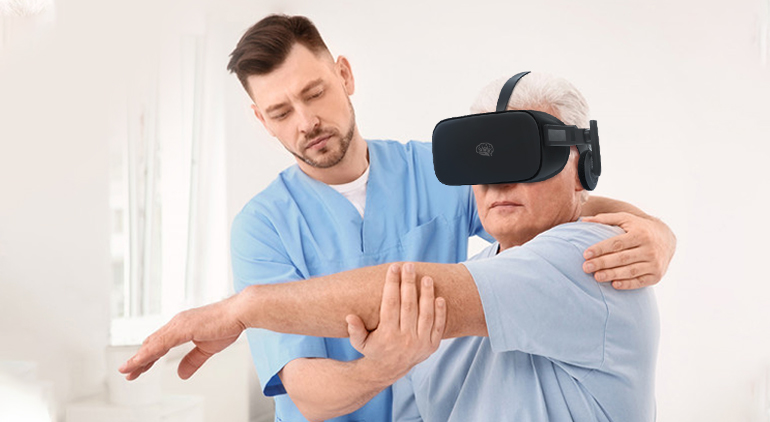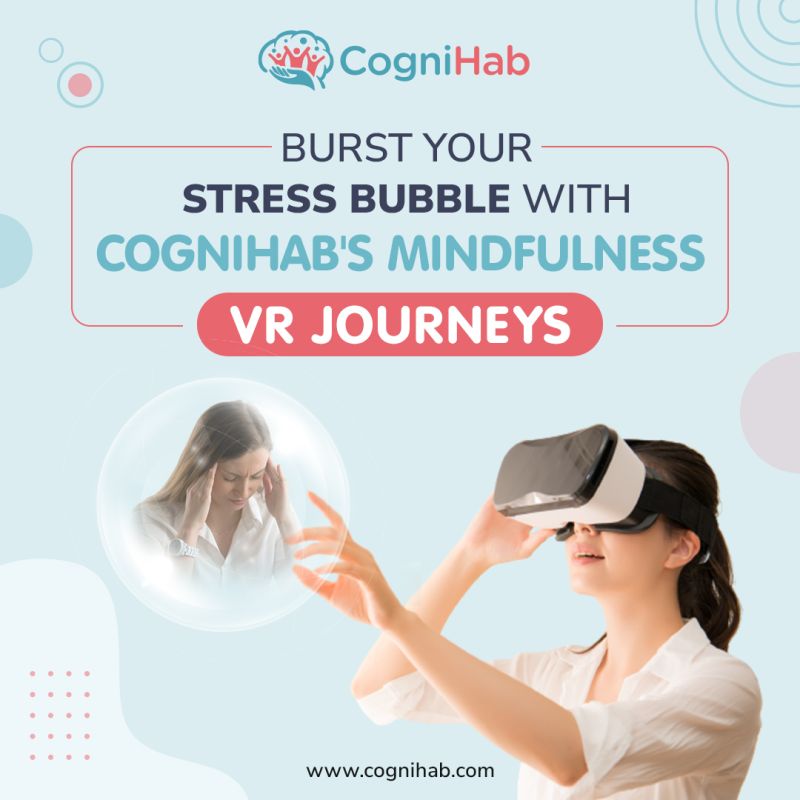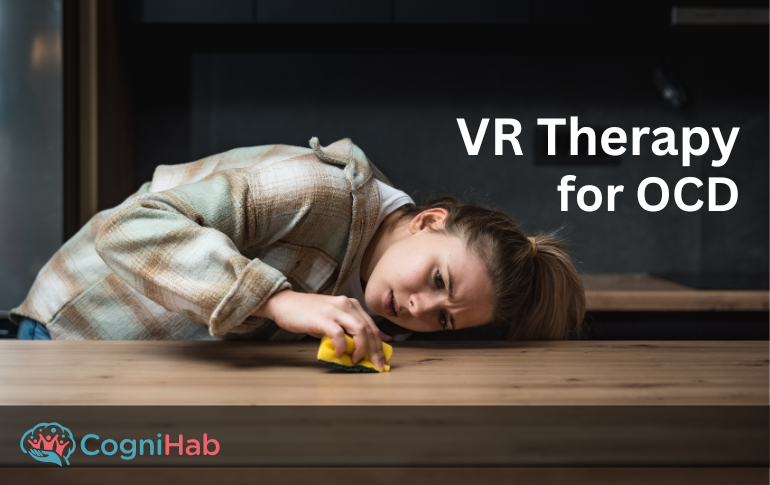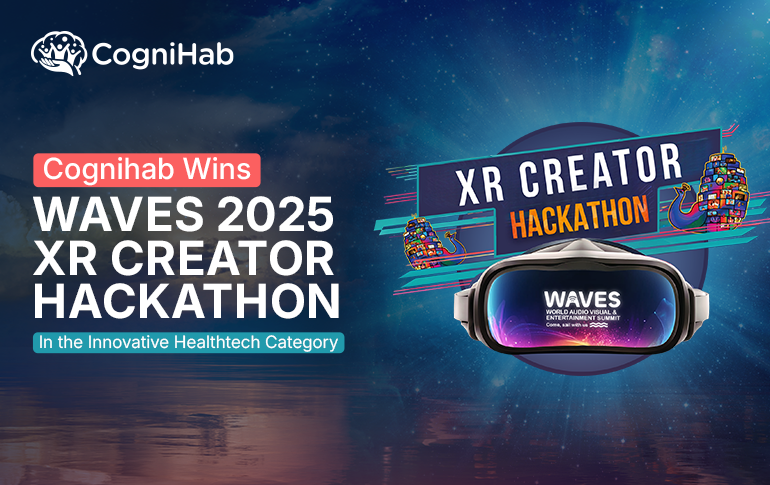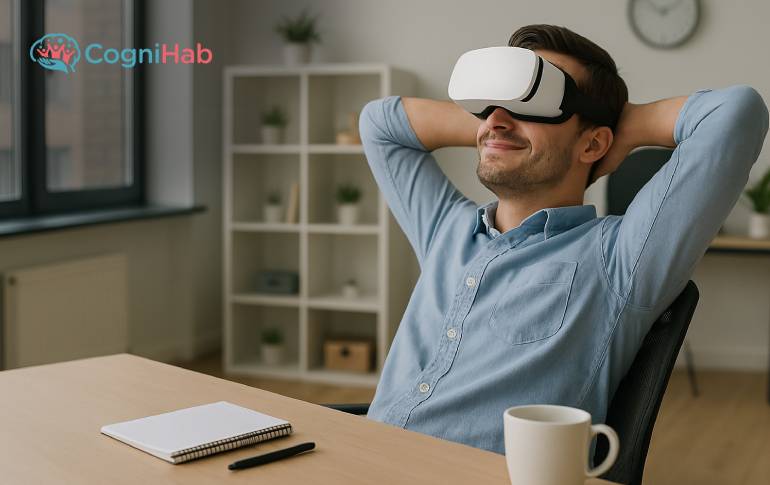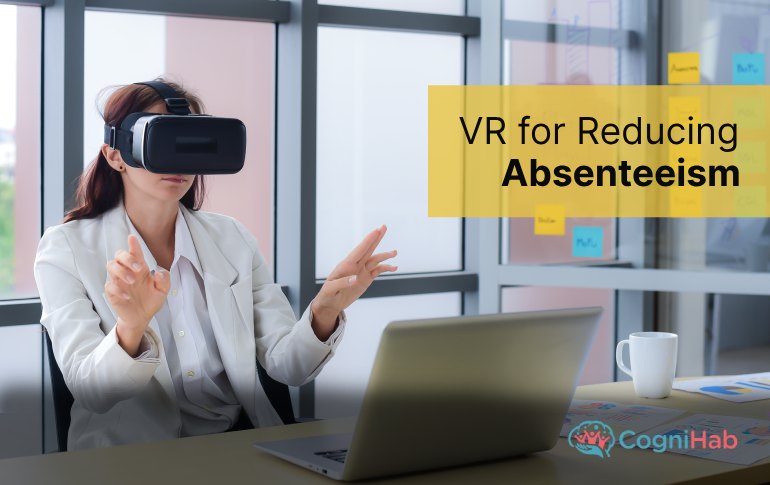Games for Stroke Patients - Role of VR Stroke Rehabilitation Exercises
Virtual reality for stroke rehabilitation is the contemporary form of technologically enabled physical therapy. It involves games, exercises, and journeys.
VR-based games for stroke are known to increase the attendance of the patients, boost their morale, and provide them with self-confidence to get on with their lives.
Virtual reality exercises for stroke are known to speed up the recovery process, provide muscle strength, and also bring balance to the body. VR-based journeys are known to provide calm and relaxation to patients’ stressful minds.
We will now see the games and exercises built-in VR which are helping stroke patients around the world.
VR-based Games for Stroke
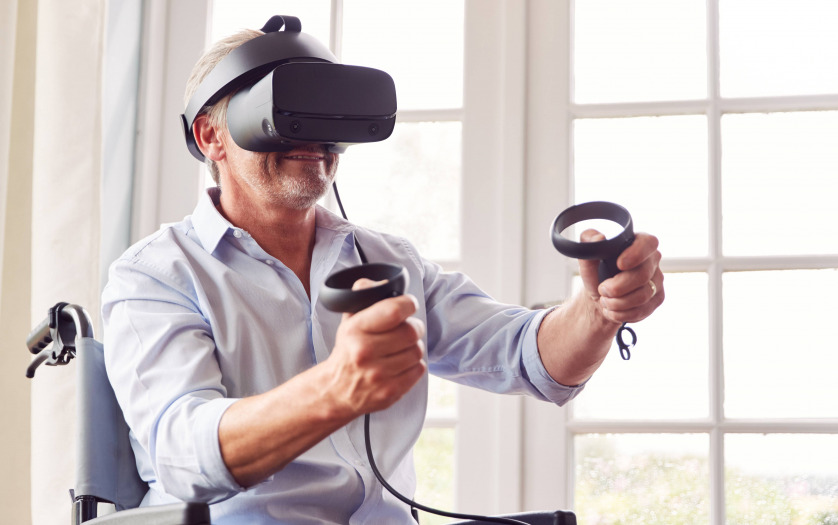
Punch the boxer is one of the games’ built-in VR for stroke patients. This measures the strength of the patient to monitor the balance of the body and also notes down the arms reach.
In this game, the patient is fighting a virtual boxer. An avatar of the boxer appears on the screen. The patient tries to win the round by knocking out the opponent or by reaching a specified number of points at a designated time.
The game provides the patient with different levels ranging from easy to difficult. When the difficulty is increased, the opponent boxer becomes more aware and starts dodging the punches as well.
Each hit on the boxer gets the patient certain points. These points depend on the force with which the punch is thrown and the place where the opponent is hit. He/she gets maximum points when the opponent’s face is hit, and fewer points when attacked on the upper body.
When a punch lands on the opponent, the VR controllers vibrate and the sound effects are also thrown in the background. The patient can easily work up an appetite by playing this game for 15 minutes.
Another game in the VR stroke rehabilitation suite is throwing the ball in the dragon’s mouth.
In this game, the patient just has to throw the ball in the dragon’s mouth. The dragon’s mouth opens and closes at different speeds. The patient’s distance from the dragon’s mouth can vary, i.e. the patient can be near or far.
The difficulty levels include a random explosion of fire in the middle of the ball and the dragon’s mouth or a random appearance of spikes. The patient has to correctly judge and throw the ball in the dragon’s mouth.
Virtual Reality Exercises for Stroke
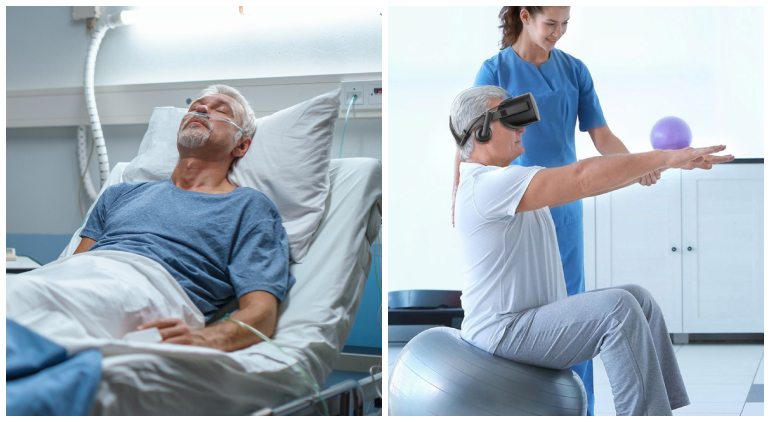
The patient does a variety of VR-based physical therapy exercises to gain independence, to improve on daily activities like brushing teeth, switching on the lights, picking up the phone, and having food.
An example of such an exercise is using a paper cutter. This is a simple exercise to increase precision. The patient is asked to cut a random drawing by a paper cutter. The paper cutter can be in any hand and the drawing is projected on the screen comfortably within arms distance.
The drawing, which is supposed to be cut out from the original drawing, is also shown on the screen. The patient has to maneuver his hand in order to form the resulting drawing. With increasing difficulty, the precision level also increases.
Another example of such exercises is opening and closing the tap. This checks the wrist motion of the patient. To open the tap, the patient has to hold the tap and move it in a clockwise direction. And similarly, in order to close it, he/she has to move his wrists in an anti-clockwise direction.
See Also: Virtual reality vision therapy suite
VR-based Journeys
Due to the inability to move the body parts in the proper way, stroke patients frequently get depressed. This prolonged depression leads to anxiety. Due to this, the patient lacks the motivation to do certain tasks.
But VR through its immersive journeys is known to alleviate a person’s mood. It is known for the fact that these journeys help in increasing the happiness quotient of a person by 300% and also for reducing depression by 66%.
These journeys are a gateway to the whole underwater experience where a person can interact with the depth of the water, touch, and see the underwater fishes (also can travel through the water bubbles). Such journeys can also take one to a mountain experience.
The patient can view the mountains as he is reaching there from a parachute. He can have a fully immersive 360-degree view of the nature around him. He can also indulge in mountaineering activities like mountain climbing where he can use both his arms to climb up the mountain.
At one point in time, he/she is seen seated near the cliff of the mountain and can experience the valley beneath it and the sky above it. Like this, he can have journeyed in space, at a beach as well.
One more therapeutic way of releasing stress is by colouring. Painting or colouring in VR just magnifies the beauty of a particular painting. The patient is given a variety of pens, brushes, and colours to paint a picture of his imagination.
By default, the screen of the environment is black. It is just like playing Holi, but with a palate of colors and in a virtual world. The person can make use of the vastness of space provided to him.
He/she can also copy a figure on the screen, and paste it somewhere on the painting he is making. Colours are a tool that directly affects the soul.


